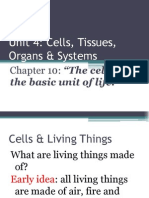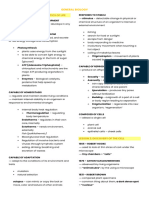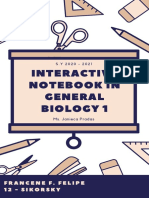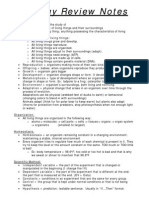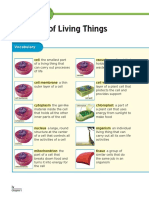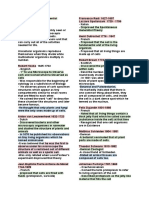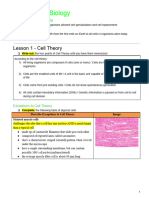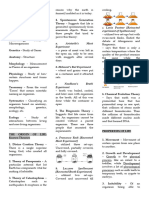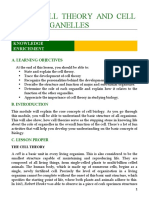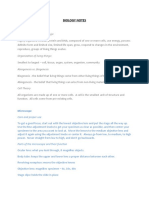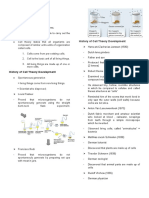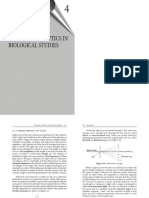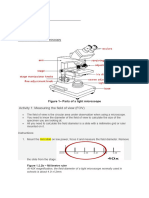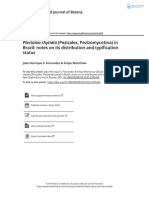0% found this document useful (0 votes)
93 views43 pagesBlocks of Life: ORGANISM - A Living Thing
Cells are the basic units of structure and function in living things. They have several key characteristics including using energy, growing, responding to stimuli, reproducing, and containing the chemicals of life. All living things are made of one or more cells. Important early scientists who contributed to the development of cell theory include Hooke, van Leeuwenhoek, Schleiden, and Schwann. Cells have several organelles that carry out specific functions and work together to keep the cell alive.
Uploaded by
visakawicksCopyright
© Attribution Non-Commercial (BY-NC)
We take content rights seriously. If you suspect this is your content, claim it here.
Available Formats
Download as DOCX, PDF, TXT or read online on Scribd
0% found this document useful (0 votes)
93 views43 pagesBlocks of Life: ORGANISM - A Living Thing
Cells are the basic units of structure and function in living things. They have several key characteristics including using energy, growing, responding to stimuli, reproducing, and containing the chemicals of life. All living things are made of one or more cells. Important early scientists who contributed to the development of cell theory include Hooke, van Leeuwenhoek, Schleiden, and Schwann. Cells have several organelles that carry out specific functions and work together to keep the cell alive.
Uploaded by
visakawicksCopyright
© Attribution Non-Commercial (BY-NC)
We take content rights seriously. If you suspect this is your content, claim it here.
Available Formats
Download as DOCX, PDF, TXT or read online on Scribd
/ 43






